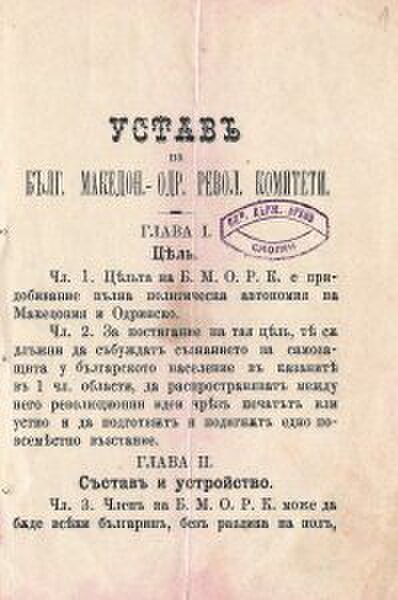Vasil Atanasov Ivanovski also known by his pseudonym Bistrishki, was a Bulgarian communist activist, publicist, theoretician of the Macedonian nation within the IMRO (United). According to the historiography in North Macedonia, Ivanovski is its founder and a prominent "fighter for the affirmation of the Macedonian national identity", and according to the Bulgarian historiography, he is known "for his wanderings on the Macedonian question". Per the Macedonian historian Ivan Katardžiev, such activists of the IMRO (United) and the Bulgarian Communist Party never managed to break with their pro-Bulgarian aspirations.
Ivanovski during the late 1940s.
One of the articles written by Vasil Ivanovski in 1934, titled "What is a Nation"?
Historiography in North Macedonia
Historiography in North Macedonia is the methodology of historical studies developed and employed by Macedonian historians. It traces its origins to 1945, when SR Macedonia became part of Yugoslavia. According to German historian Stefan Troebst, it has preserved nearly the same agenda as Marxist historiography from the times of the Socialist Federal Republic of Yugoslavia. The generation of Macedonian historians closely associated with the Yugoslav period, who were instrumental in establishing national historical narratives, still exerts an influence on modern-day institutions. In the field of historiography, communism and Macedonian nationalism are closely related. After the Fall of communism, Macedonian historiography did not significantly revise its communist past, because of the key role played by communist policies in establishing a distinct Macedonian nation.

The "Warrior on a horse" (Alexander the Great) monument in Skopje. Historically this area never became part of Ancient Macedonia.
Front cover of the Bulgarian Folk Songs collected by the Miladinov Brothers and published in 1861. In the early 2000s the Macedonian State Archive displayed a photocopy of the book, but with the upper part showing the word "Bulgarian" being cut off.
The Bitola inscription from 1016/1017. Originally exhibited in the local museum, it was locked away when Bulgarian scientists became aware of its content, confirming the Cometopuli considered their state Bulgarian.
The statute of the turn of the 20th century Bulgarian Macedonian-Adrianople Revolutionary Committees (later IMARO/IMRO). Its membership then was allowed only for Bulgarians. It was discovered by Ivan Katardžiev in Skopje, but its authenticity has been disputed by most Macedonian historians by obvious reasons.






